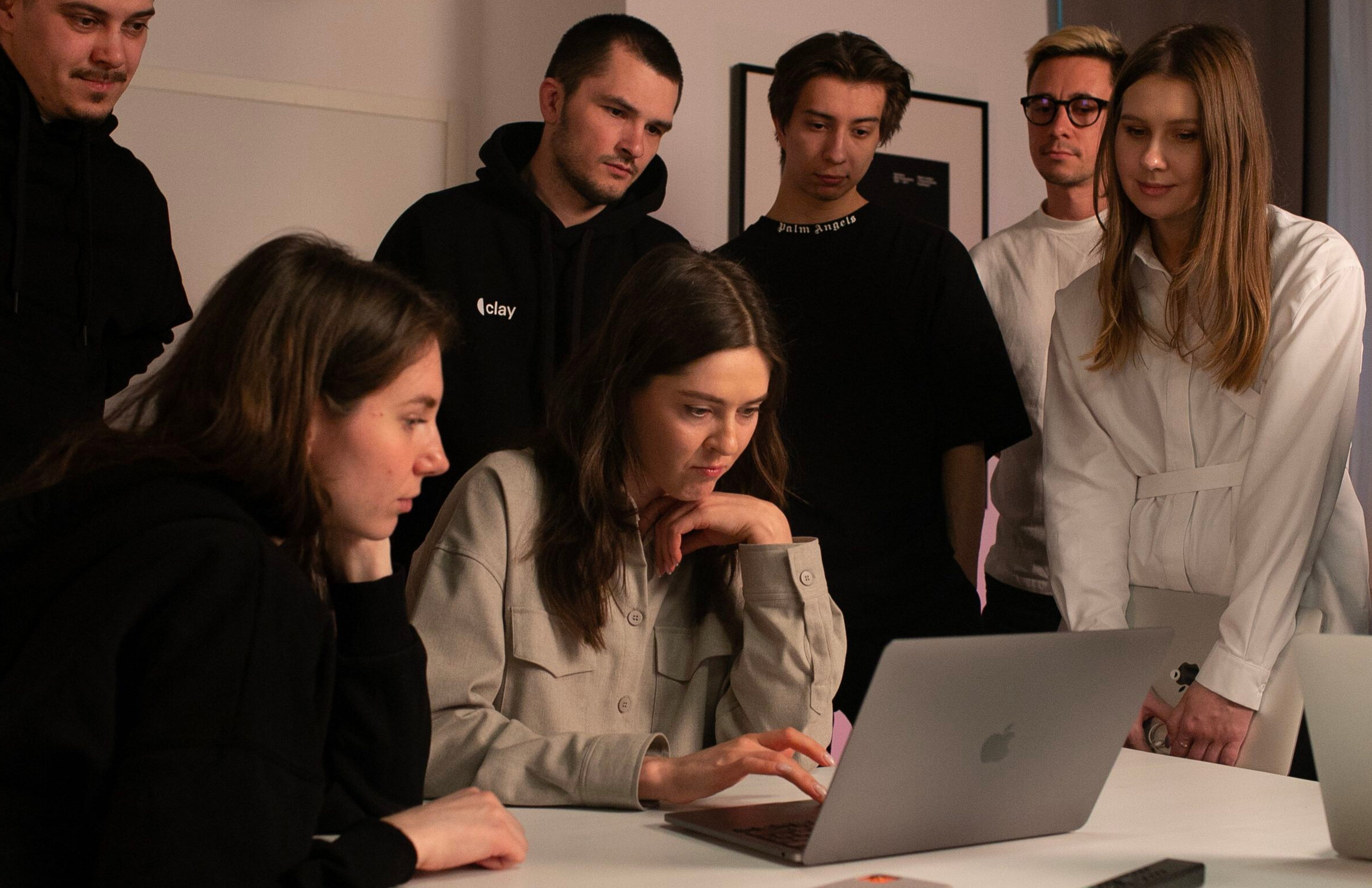UX design is an ever-evolving field and one of tech's most popular career paths. You have two primary options as a UX designer: work as a freelance designer or join a UX design firm. Each option has advantages and disadvantages, so weighing all your options before making any decisions is essential.
This article will explore the differences between working as a freelance UX designer and joining a UX design firm. We’ll look at the pros and cons of each approach so that you can make an informed decision about which path is right for you.
Freelance UX Design: What Is It?
Freelance UX design involves creating user experiences (UX) for clients on a project-by-project basis, without being employed full-time. Freelance UX designers help companies improve the usability of their products or services by offering their expertise as independent contractors. Managing a freelance business involves not only design work but also handling administrative tasks, client communication, and financial management.
Advantages of Freelance UX Design
Flexibility and Autonomy
Control Over Schedule and Projects: Freelance UX designers have the freedom to choose their workflow and projects. They can decide when and where to work, how much time to dedicate to each project, and which clients to collaborate with. Achieving the status of a successful freelance UX designer requires not only design skills but also effective time management and client relationship building.
Specialization Opportunities: Freelancers can focus on the areas of UX design they are most passionate about, making it easier to find projects that align with their expertise while building a diverse and impressive portfolio.
Exposure to Different Industries: Working with clients across various industries provides valuable insights into the specific user needs of different sectors.
UX Designer Illustration

Higher Earning Potential
Set Your Own Rates: Freelance UX designers determine their rates, which allows for greater earning potential. Rates can be adjusted based on the project scope, the client’s budget, or market demand.
High-Value Contracts: Freelancers can pursue higher-paying gigs that align with their skillset, often earning more than they would in a traditional full-time role.
Freelancing offers UX designers the opportunity to take charge of their careers, work on exciting projects, and maximize their income while enjoying the freedom of an independent work life.
Source: Austin Distel on Unsplash

Challenges of Freelance UX Design Career
Despite the numerous advantages of freelancing as a UX designer, various challenges must be considered.
Irregular Income and the Need for Self-promotion
Freelance UX designers often deal with the stress of income that comes and goes. Because there’s no regular paycheck, earnings depend on which gigs they take, how well they negotiate pay, and how quickly they finish the projects. That means designers must brace for the months when work runs short, making budgeting feel shaky.
In addition, they have to take charge of marketing themselves to land the next project. With many designers fighting for the same job, simply waiting for a referral won’t cut it. Staying on potential clients’ radars means having a polished online presence — gardening a strong portfolio, polishing a personal website, and sharing design work on social media. Each step costs time and usually a little cash, but they can grow the flow of new projects.
UX Trends

Responsibility for Project Management and Client Communication
When you design UX work independently, you don’t have a project manager to keep everything moving. Managing deadlines, breaking work into milestones, and letting clients know where things stand falls squarely on the designer’s shoulders. That’s how trust gets built over time — by always keeping the client in the loop.
Understanding what the client truly wants and helping them see how you can make it happen requires top-notch communication. You must listen carefully to their needs and explain your design choices in simple language, turning jargon into clear takeaways. Presenting drafts and simplifying complex ideas ensures everyone — down to the non-technical stakeholders — stays aligned, keeping projects cruising.
Strong problem-solving skills are necessary for any UX designer pushing a project forward. Whether it’s a sticky technical glitch or a last-minute design pivot, you’ve got to figure it out and keep moving. Since most freelance UX designers work from home, keeping tabs on the latest tech tools is equally important. The smoother the tools, the softer the talk with clients, developers, and project managers.
UX Vision

Isolation and the Importance of Building a Professional Network
Freelancing full-time can feel like a digital bubble, especially in UX. No coffee machine huddles, no “quick question” chats that magically land you a nugget of insight. That physical distance can starve you of fresh ideas and the latest industry practices, making it harder to rally a team on a design sketch when no one is in the same room.
The key is to break that bubble before it gets comfortable. Hit up online design communities, and subscribe to UX meetups or hackathons. These events are a free pass to the latest tools and to new freelancers, clients, or mentors. Sharing experiences on chat threads or Zoom calls can spark fresh ideas, crowdsource solutions, and fill gaps in your skills. Additionally, sketching out detailed user personas lets you step into your audience’s shoes so your designs land where the users live.
Connecting with others in the industry makes it easier for freelancers to build their reputation as trusted designers. Platforms like LinkedIn and Twitter serve as lively marketplaces where they can showcase standout projects, participate in lively debates, and share tools or bite-sized tips on making design easier for users.
Web Design Components

What Is a UX Design Firm?
A UX design firm specializes in delivering user experience (UX) services such as:
- User research
- Visual and interaction design
- Usability testing
These firms typically employ multidisciplinary experts with backgrounds in fields like graphic design, psychology, marketing, engineering, anthropology, and computer science. Their primary goal is to create products and services that are functional and engaging for users. Businesses often hire UX designers from these firms to ensure their products and services meet high usability standards.
Benefits of Working at a UX Design Firm
Stable Income and Benefits
Joining a UX design firm means design talent can count on a regular paycheck and benefits built for everyday life. Salaries are solid, and health plans cover mind, body, and wallet.
Work hours are adjustable, so designers can stay sharp at their screens while dropping the kids off at school or catching a quick training class. Round-the-year leave policies, plus extras like catered snacks, gym subscriptions, and mind-body retreats, also keep spirits high at home and at the desk.
Career Growth Opportunities
Progressing at a firm means growing becomes part of the job, never a chore. Companies cover the cost of hands-on workshops, distant industry conferences, and fan-favorite design festivals, making it easy to learn what’s next and what’s best.
Some designers are even paired with seasoned pros in formal mentorships where goals get serious, and success becomes just months away. The mix of lectures, live audits, and joint projects means designers keep leveling up, making a design firm the wise choice for hitting the next UX milestone.
Learning from Top Industry Professionals
- Exposure to experts in areas like user research methods and prototyping tools.
- Opportunities to learn from colleagues with experience in diverse projects, gaining valuable insights applicable both within and outside the workplace.
UX Research Components

Collaborative Work Environment
Knowledge Sharing and Feedback
Collaboration is key in UX design firms, where designers exchange ideas, discuss projects, and receive constructive feedback to improve their work. This culture of knowledge sharing fosters innovation and problem-solving, leading to better design solutions.
Mentorship Programs
Junior designers gain valuable guidance from experienced mentors, learning best practices in design and project execution. Mentorship also helps them build industry connections, opening doors to new opportunities and professional growth.
Challenges of Working in a UX Design Firm
Working in a UX design firm can be an excellent opportunity for freelance designers to gain experience while developing their skill sets. However, as with any job, specific challenges accompany this type of work.
Limited Control over Project Selection and Creative Direction
Working at a UX design studio can be exciting, but a big downside is that designers don’t pick which projects they get to lead. Studios have a pipeline of clients, and designers typically jump into whichever project lands on their desk that week. When you’re trying to steer the ship, it’s frustrating to discover the studio is the one that’s choosing which waters you sail through.
New requests pour in almost daily, and juggling them can feel like playing Tetris in a tornado. When the board gets too full, it’s easy to spiral into full-on burnout. The passion that got you into design can fade when the project you’re stuck on is the one you least enjoy.
Non-Disclosure Agreement (NDA)

Rush jobs feel like the studio’s native language. Deadlines are set by people who won’t meet them daily, so designers often have to jump in, shuffle timelines, and keep all the balls in the air. The result is burnout that creeps in, even when the work looks great on the final slide.
To keep client work secure, studios make designers sign NDAs. This means sharing a project on Twitter for feedback or chatting casually about design decisions at meetups is often off the table. It’s a bummer because sharing screens or even rough wireframes is a great way to juggle concepts with peers, and suddenly you can’t even promote that work for a portfolio.
Strict Deadlines and Potential for Overtime Work
Life at a UX design firm commonly means racing against the clock and putting in evenings and weekends. Most designers have to follow an unmovable timeline, and that pressure only rises when balancing several projects simultaneously.
Design teams often clock in after hours when a due date looms to keep schedules on track. Repeatedly doing this wears on the body and mind, sometimes pushing folks into the danger zone of burnout.
Unfortunately, many agencies expect this “extra mile” without adding to the paycheck. Overtime sometimes goes without a thank-you, and tighter-than-average expectations are welcomed as simply part of the UX world. The gap between what companies demand and what they pay can breed resentment over time.
Source: Lala Azizli on Unsplash

When deadlines pinch, the chances of making avoidable mistakes soar. To keep the clock from hitting zero, a designer might skip a user interview, overlook accessibility checks, or leave half-done fine details. The end product can misfire, and the design meets neither client expectations nor the users’ real needs.
Career Progression and Potential for Specialization
Working in a UX design firm can provide many opportunities for career progression and potential for specialization. As designers gain experience in the industry, they can take on more complex projects and specialize in specific areas such as user research, user interface design, information architecture, or accessibility. This allows them to hone their skills and create innovative solutions tailored to their client’s needs.
Freelance UX designers get exposure to different industries and products by working with multiple clients. This helps them stay current on emerging technologies or customer demands while gaining valuable insights into various aspects of UX design. With this knowledge, they can better understand user needs and create innovative solutions that meet customer requirements.
Lastly, most UX design firms also provide career development programs or mentoring opportunities to help designers build their skills and progress quickly.
Factors to Consider when Choosing Between Freelancing and Working in a Firm
When deciding between freelancing and working in a firm, it's essential to consider the level of flexibility and independence you desire. While freelancing offers the freedom to choose projects and set your schedule, working in a firm provides a more structured environment with a steady income and potential for career growth.
Individual Preferences and Work Style
Individual preferences and work styles should be considered when considering whether to freelance or work in a UX design firm. For example, freelancers have the freedom and flexibility to choose their projects and work hours, which can provide more control over their workloads and careers and higher job satisfaction.
On the other hand, working in a firm often provides more security with a steady paycheck and access to benefits such as health care coverage.
Freelance designers may thrive in an environment where they can pursue creative ideas independently and focus solely on designing solutions for clients.
This makes it easier for them to remain motivated and explore innovative solutions without feeling constrained by outside expectations. In addition, freelance designers can diversify their portfolios and work with clients within various industries or domains.
On the other hand, those who prefer stability may find it beneficial to work in a design firm with the potential for growth within the organization. Working at a firm gives designers access to collective resources such as expert mentorship programs to help them refine their skills while advancing their career paths.
Firms typically have comprehensive benefits that allow employees greater financial security than freelancers may have access to.
Source: Christina @ wocintechchat.com on Unsplash

Financial Considerations and Risk Tolerance
Financial considerations and risk tolerance are important when choosing between freelancing and working in a UX design firm. For starters, freelancers typically have more flexibility when pricing their services and projects.
This means they can charge a fee that reflects the value of their work and the time commitment involved in completing the project. As such, they have the potential to earn more money than those working in a firm.
Freelancers face financial uncertainty due to unreliable project streams and inconsistent client payments. This can be especially true for beginners without experience negotiating contracts or pricing their services.
Freelance designers may need to invest more time and effort into marketing themselves and networking with potential clients. Moreover, they may also need to take on additional tasks, such as administrative work or bookkeeping, that can further stretch their resources. Freelancers may also need to invest in search engine optimization to improve their online visibility and attract more clients.
On the other hand, those who choose to work in a UX design firm usually have more income and job security stability. Most firms offer competitive pay and benefits, while some even provide bonuses or equity options.
Designers in firms often have the support of a dedicated team to help with administrative tasks or handle client communication. This can free up their time and resources to focus solely on design work.
Financial considerations and risk tolerance must be carefully weighed when considering between freelancing and working in a UX design firm. Freelance designers may have more freedom.
Desired Level of Creative Control and Project Variety
When deciding between freelancing and working in a UX design firm, the desired level of creative control and project variety should be considered. Freelance designers typically have more autonomy over their projects, allowing them to choose clients and projects that best fit their interests and skillset.
This allows them to work on different products or services and explore innovative solutions without being constrained by external expectations. In addition, freelance designers gain exposure to different industries and products by working with multiple clients.
Freelance designers can pursue creative ideas independently and collaborate with other professionals in the industry. By networking with peers, they can gain valuable insights into various aspects of user experience design while exploring new technology trends. This provides an excellent opportunity for professional growth while deepening their understanding of UX principles.
UX Design Principles

Those working in a firm may enjoy greater job security and benefits like health care or bonuses. However, they might have less creative freedom due to internal processes and protocols. Some firms may also focus on specific products or services, limiting project variety, though certain companies allow employees to take on outside work.
When deciding between freelancing and working at a UX design firm, consider the level of creative control and project variety you want. Freelancers often enjoy more autonomy, while firm employees benefit from stability and perks. Both paths offer strong career growth opportunities, so it ultimately depends on personal preferences.
FAQ
Can We Do Freelancing In UI/UX Design?
Yes. UI/UX design is a popular freelancing field because businesses of all sizes need intuitive, user-friendly digital products. Freelancers can work with startups, agencies, or direct clients globally.
How To Get Freelance Work As A UI/UX Designer?
Build a strong portfolio showcasing real projects or case studies. Use freelance platforms, design communities, and networking to find gigs. A personal website and active LinkedIn profile also help attract clients.
How To Find Clients As A Freelance UX Designer?
Clients can be found through online marketplaces like Upwork, Fiverr, and Toptal, as well as by networking on LinkedIn, joining design forums, and asking for referrals from past projects. Showcasing thought leadership through blog posts or design shares also draws attention.
Who Pays UX Designers The Most?
Top-paying industries for UX designers include tech companies, finance, healthcare, and enterprise software. The highest-paying clients are usually in North America and Europe, with Silicon Valley firms and large enterprises leading on rates.
Read more:
Conclusion
When deciding between freelancing and working in a UX design firm, it's essential to consider the desired level of creative control and project variety, financial considerations and risk tolerance, professional development opportunities, and long-term career goals.
Both options provide excellent opportunities for growth but may require different approaches when developing skills or networking with peers. Ultimately, individuals must carefully weigh their preferences before committing to either route to achieve success within the field of user experience design.


About Clay
Clay is a UI/UX design & branding agency in San Francisco. We team up with startups and leading brands to create transformative digital experience. Clients: Facebook, Slack, Google, Amazon, Credit Karma, Zenefits, etc.
Learn more

About Clay
Clay is a UI/UX design & branding agency in San Francisco. We team up with startups and leading brands to create transformative digital experience. Clients: Facebook, Slack, Google, Amazon, Credit Karma, Zenefits, etc.
Learn more




